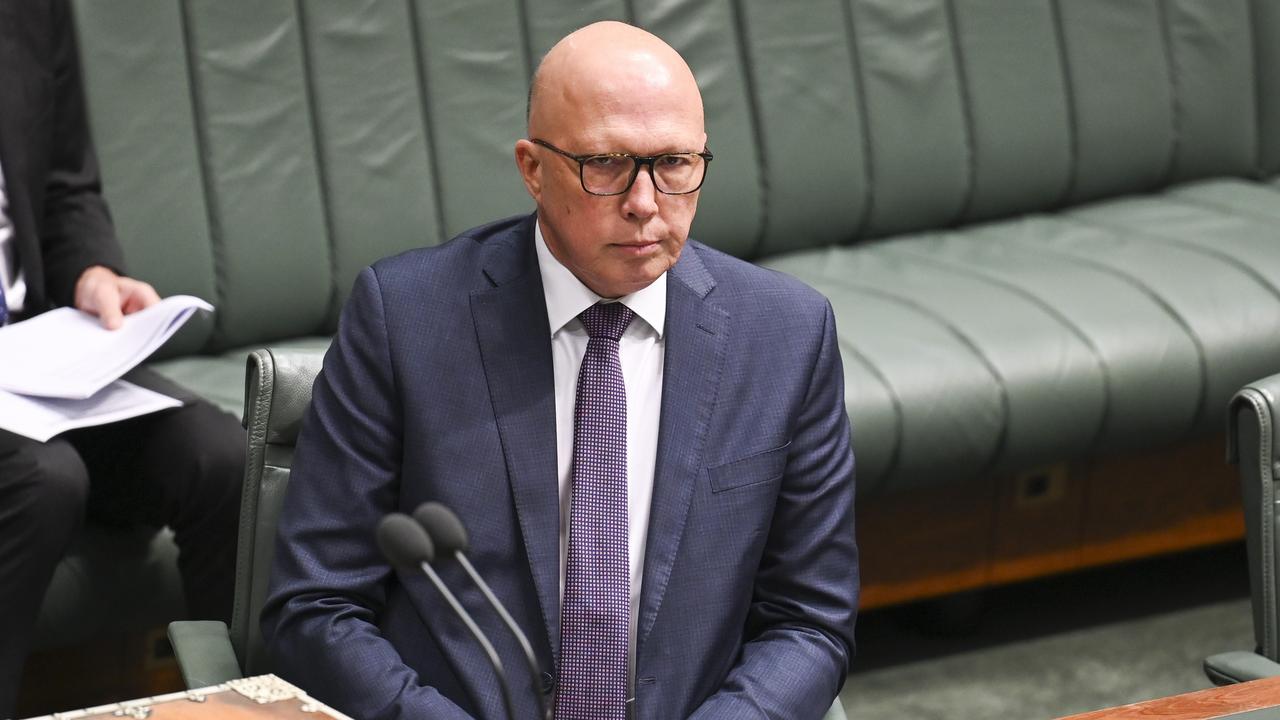CSIRO report paints grim picture of cost, timeline of Coalition’s nuclear idea
The Coalition’s plans for a nuclear future have been cast into further doubt with a new report revealing how much it would cost Australia in the long run.
A new report that lays bare just how expensive a nuclear future would be to Australia “torpedos” Peter Dutton’s “fantasy”, the Treasurer says.
The CSIRO and Australia’s energy market regulator AEMO handed down their final report on the country’s future electricity costs on Wednesday, estimating a large-scale nuclear reactor would take almost 20 years to build, cost up to $17bn and produce electricity that would cost twice as much as renewables.
The 2024 GenCost report – produced every year for investors – factored in the cost of large scale reactors for the first time, as well as the cost of transmission lines for renewables.
It estimated building a large reactor would produce cheaper power than small modular reactors – as first proposed by the Opposition – but noted the high likelihood of cost blow outs and prolonged timelines, pointing to how long it has taken other countries like the United Arab Emirates to build its first operational nuclear power plant.
The Opposition has said it would build seven nuclear reactors in Australia if it won next year’s federal election, although Mr Dutton and the Coalition have not yet provided a detailed policy including costings and sites.
Jim Chalmers said the CSIRO report should spell the end of the Opposition Leader’s plans.
“I think the CSIRO has completely torpedoed this uncosted nuclear fantasy of Peter Dutton’s,” he said.
“The madness of this I think is laid bare in the CSIRO report for Australia we have immense opportunity in the renewable sector as the world transitions to net zero.”
“There’s an important message for Angus Taylor - it’s time to tell Australians where the nuclear reactors will go and why (the opposition) prefers a method of energy or energy source which costs more and takes longer to build.”

Mr Dutton as recently as Tuesday declared nuclear energy was “cheaper … more reliable … zero emissions”.
“That’s why if you look at the top 20 economies in the world, Australia is the only one, at the moment, that hasn’t got nuclear power or hasn’t signed up to it,” Mr Dutton said.
The report compared nuclear power to conventional energy like gas and black coal fire generation, noting the costs were relatively similar, compared to the dramatically cheaper renewable energy.
It followed a December draft report, which found small modular reactors would be far more expensive than renewables or coal or gas. That draft prompted Mr Dutton to call into question CSIRO’s credibility, to which the agency made the unprecedented move to defend itself and the neutrality of the report.

In the final report, the CSIRO based its coast projections on a continuous build program of nuclear power plants in South Korea – cheaper than those in the United States.
“Based on this approach, the expected capital cost of a large-scale nuclear plant in 2023 is $8655/kW,” the report said, meaning a standard one-megawatt power station would cost about $8.65bn.
Asked about the report on Wednesday morning, Nationals senator Matt Canavan said an $8.5bn price tag was a “bargain” compared to the $12bn and counting we’re spending on Snowy (Hydro) 2.0”.
“Renewable energy isn’t that cheap. And it’s a lot more expensive than what we’ve had in the past,” he said.
The report noted a first-of-a-kind premium of 100 per cent could not be ruled out, meaning the cost could blow out to $17bn.
Energy Minister Chris Bowen said the report raised further questions about the Coalition’s policy and reinforced what the government had been saying about nuclear.
“Despite claims from the opposition, quite inappropriate attacks on CSIRO and AEMO from the opposition, that they hadn’t counted the cost of transmission. The cost of transmission and storage is counted and still renewables come out as the cheapest,” Mr Bowen said.
“The CSIRO points out that nuclear will be (a) very long lead time to build, very slow to build. So nuclear is slow and expensive and is risky when it comes to the reliability of Australia’s energy system.”
Chief economist of the CSIRO’s energy business unit Paul Graham said the agency had done “a lot of work” to determine what nuclear power would cost Australia.
“GenCost is flexible to adjusting assumptions, scope and methodology in response to constructive feedback received during the formal consultation period and throughout the year,” Mr Graham said.
“For example, our approach to the inclusion of large-scale nuclear technology provides a logical, transparent and policy-neutral method of costing a potential deployment scenario in Australia.“



